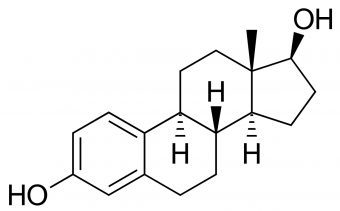- Home
- Editorial
- News
- Practice Guidelines
- Anesthesiology Guidelines
- Cancer Guidelines
- Cardiac Sciences Guidelines
- Critical Care Guidelines
- Dentistry Guidelines
- Dermatology Guidelines
- Diabetes and Endo Guidelines
- Diagnostics Guidelines
- ENT Guidelines
- Featured Practice Guidelines
- Gastroenterology Guidelines
- Geriatrics Guidelines
- Medicine Guidelines
- Nephrology Guidelines
- Neurosciences Guidelines
- Obs and Gynae Guidelines
- Ophthalmology Guidelines
- Orthopaedics Guidelines
- Paediatrics Guidelines
- Psychiatry Guidelines
- Pulmonology Guidelines
- Radiology Guidelines
- Surgery Guidelines
- Urology Guidelines
Estrogen regulates pathological changes of bones via bone lining cells

The most important female sex hormone, oestrogen, plays a crucial role in the regulation of bone mass. Oestrogen deficiency is known to be a major cause of postmenopausal osteoporosis, or bone weakness. Skeletal stability and pathological skeletal changes thus depend directly on the hormone's availability and its interaction with the bone cells.
Until now, however, the actual target cells responsible for mediating the effect of oestrogen on bone had still been unknown. Researchers at Vetmeduni Vienna have now demonstrated that bone lining cells act as "gatekeepers" for the hormone. By binding to these cells, oestrogen controls the expression of RANKL, an important factor in bone turnover and remodelling.
Oestrogen uses a certain cell type to mediate its effect on bone density
The development of bone structure depends on a complex system of hormones and proteins. One important component is the signalling molecule RANKL. It influences the development of special cells, the so-called osteoclasts that are responsible for bone resorption. A lack of oestrogen or the corresponding cell receptors where it can bind results in the overproduction of RANKL, which triggers a variety of pathological bone changes.
Several studies confirm oestrogen's role in regulating RANKL production and thus in protecting skeletal integrity. "Which cells it must bind to in order to have this effect, however, had been a matter of debate," says study director Reinhold Erben from the Unit of Physiology, Pathophysiology and Experimental Endocrinology. "We were now able to confirm that oestrogen's effect on bone occurs primarily through binding to the bone lining cells."
The bone lining cells cover the bone surfaces and contact other bone cells, such as the osteocytes that reside inside the bones, through cell-to-cell contact. They had been suspected of being involved in the regulation of bone resorption through the osteoclasts. The fact that the bone lining cells, as target cells for oestrogen, play a role in bone maintenance confirms this suspicion.
Tissue cells surrounding the bones act as mediator of the hormonal effect
Erben and his team based their study on the use of a special mouse model and new experimental methods. "We used different groups of mice, in which either the oestrogen receptor or RANKL was inactivated in hematopoietic cells or in mesenchymal cells, to be able to identify the target cells of the hormone. The effect we were looking for was found only in mesenchymal cells," explains Erben.
To identify the cells, the research team used a special method called laser capture microdissection to exactly separate individual cell types from the remaining tissue. They then determined the gene frequency using RNA analysis and were so able to confirm the bone lining cells as the primary target cells. "The bone lining cells also make sense as gatekeepers or mediators for the effect of the bound hormone because of their position on the bone and their connection to the other bone cells," says Erben. "Future studies are needed to answer whether other hormones also influence bone turnover via this cell type or if they use other cells. The aim of our study was merely to answer the question of how the interaction of oestrogen with bone functions."
For more details click on the link : http://www.vetmeduni.ac.at/en/infoservice/presseinformation/press-releases-2017/oestrogen-regulates-pathological-changes-of-bones-via-bone-lining-cells/

Disclaimer: This site is primarily intended for healthcare professionals. Any content/information on this website does not replace the advice of medical and/or health professionals and should not be construed as medical/diagnostic advice/endorsement or prescription. Use of this site is subject to our terms of use, privacy policy, advertisement policy. © 2020 Minerva Medical Treatment Pvt Ltd